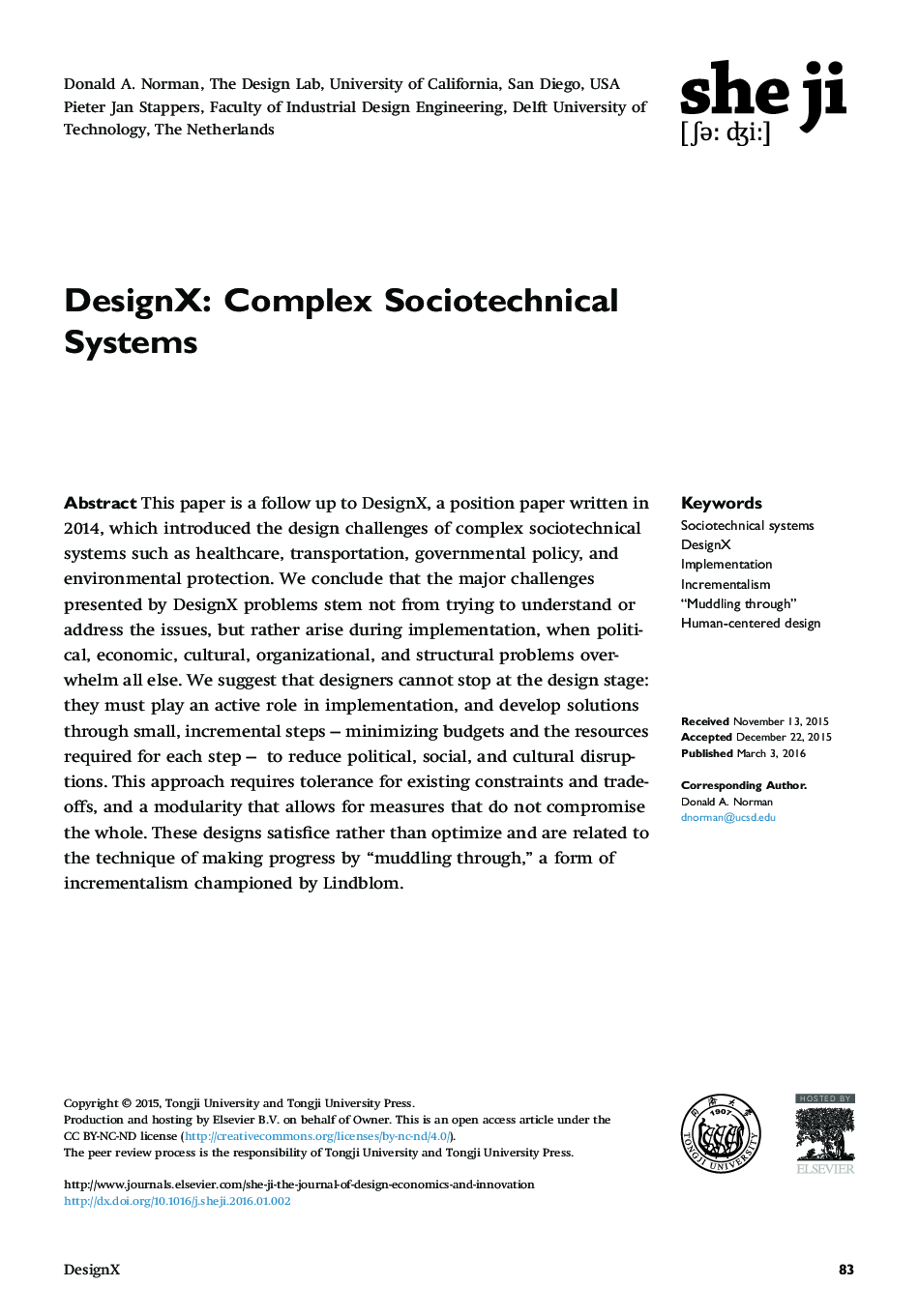| کد مقاله | کد نشریه | سال انتشار | مقاله انگلیسی | نسخه تمام متن |
|---|---|---|---|---|
| 1026824 | 1483414 | 2015 | 24 صفحه PDF | دانلود رایگان |
• Designers now face the challenge of designing complex sociotechnical systems.
• For complex sociotechnical problems, design is not limited to one person, one phase, or one solution.
• Some systems work through evolutionary development and satisficing rather than optimizing.
• Complex sociotechnical systems require a combination incremental “muddling through” and satisficing.
• Implementation is usually the great challenge.
This paper is a follow up to DesignX, a position paper written in 2014, which introduced the design challenges of complex sociotechnical systems such as healthcare, transportation, governmental policy, and environmental protection. We conclude that the major challenges presented by DesignX problems stem not from trying to understand or address the issues, but rather arise during implementation, when political, economic, cultural, organizational, and structural problems overwhelm all else. We suggest that designers cannot stop at the design stage: they must play an active role in implementation, and develop solutions through small, incremental steps—minimizing budgets and the resources required for each step— to reduce political, social, and cultural disruptions. This approach requires tolerance for existing constraints and trade-offs, and a modularity that allows for measures that do not compromise the whole. These designs satisfice rather than optimize and are related to the technique of making progress by “muddling through,” a form of incrementalism championed by Lindblom.
Journal: She Ji: The Journal of Design, Economics, and Innovation - Volume 1, Issue 2, Winter 2015, Pages 83–106
